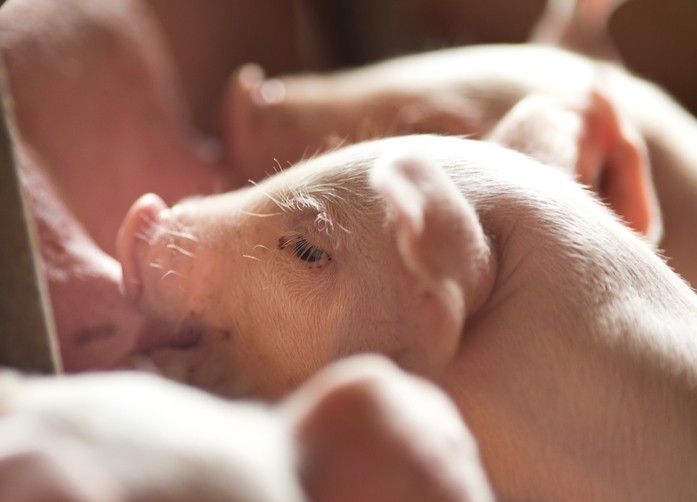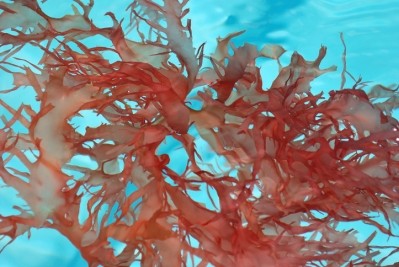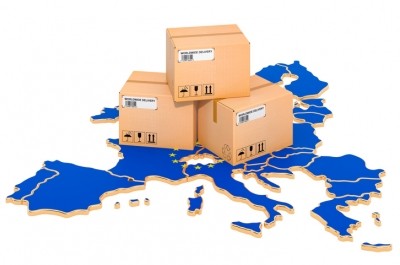Seaweed to animal feed producer in European push

The company develops novel blends of red, brown, and green macroalgae and sells these as functional ingredients into the feed industry.
While OHT has been around for around a decade in start-up mode, it is only now starting to make real progress in adoption in Europe, the US, and in South East Asia, said its new CEO, Graham Ellis.
The deal with Barentz as its key distributor in parts of Europe will see OHT ramp up harder, particularly in bovine and swine applications, he said.
“We are transitioning from start-up to a fully-fledged feed ingredient company,” he said.
In terms of the rationale behind the tie-up with Barentz, he told FeedNavigator:
“If you look to the first few years of OHT, what we were doing was, fundamentally, coming up with ideas, blends and doing proof of concept trials. In doing that, you can have one to one relationships with early adoption customers, but as soon as you start to have traction, and the number of opportunities start to go up, you have to make a choice. You either have to start to build up your own sales force or you look for other ways to get this type of product into the market.
“And when we looked at what Barentz was doing, we saw it had a really good footprint in bovine and swine, the two markets in which we are trying to push into in Europe now.
“Barentz is also used to doing a technical sale, it understands how to launch new products and how to grow market penetration for those products once they have their initial data.”
OHT’s main production base is in Vietnam, and it has a smaller production site in Galway in Ireland.
“We have a huge supply chain running in South East Asia and probably one of the largest seaweed to animal feed plants there is,” said Ellis.
Previously registered in Canada, the OHT head office is now operating out of the UK, where the larger shareholders are based:
“Like most start-up companies you reach a point where you have to get organized, ready for the next phase of life. So it made sense to make a few changes, including the move to Fareham in the UK, in terms of management.”
Ellis only joined OHT as CEO in November 2017, after carrying out due diligence for the company in October last year.
“I was previously operating the omega-3 business Corbion recently purchased, so I was experienced in launching new products into the animal feed market and that is what OHT wanted.
“I was staggered when I saw the product data when I came into the company. Really all that was needed was a strong organizational push, and that is what is happening now.”
Market penetration
Ocean Harvest’s starting point in swine in Europe will be in the niche, value added pork segments, either the organics or the heritage end, he said.
“In the US, where we have been pushing a little harder quite frankly, we are already making inroads into the smaller integrator size - 5,000 to 10,000 - sow operations, and we are now in trials with some of the larger operators. I would expect to see a similar progression in Europe, where we bring great benefits to a company at the heritage end, but then get noticed soon after by the larger businesses.
“If you look at the size of the swine industry, if we globally gained 1-2% then we would be a very happy company; getting decent penetration in the US and niche penetration in Europe over the next 3-5 years would take us a long way towards that goal.”
On the dairy side in Europe, Ocean Harvest has a “solid base of small customers” in Ireland and in the Benelux countries. “With the distribution deal announced today, we want to expand out to the other big dairy producing regions of Europe.”
OHT’s product portfolio also includes blends targeting salmon and shrimp production and poultry. But Ellis said the company wanted to avoid the trap many start-ups can fall into of focusing on too many categories at the outset:
“Focus is very important to get traction. While we have a strong suite of products, they don’t necessarily have all the data behind them. So what we have done in the past months is really concentrate on swine and bovine, maintaining the business we have in equine and pet, getting more data, and looking at additional trials – we are actually carrying out a swine trial with Kansas State University (KSU) – once we have everything we need to target the mid to upper segments of the swine and bovine markets, only then we will start to push into the aquaculture and poultry sectors.”
Functional feed ingredients
The seaweed blends are being sold as functional feed ingredients and priced accordingly, he said, based on what they do in terms of average daily gain (ADG) and FCR improvements and their prebiotic effect on animal gut health.
“In a US example, we have generated between US$3 and US$8 per pig net profit gain, which, certainly for the US market, is substantial, and I think, still very relevant for the European market.”
A US trial on its swine blend involving 650 pigs in the trial group and the same size cohort in the control group, with the average pig start weight at 55lb (25 kg) and the seaweed swine blend added in at 10lb (4.5 kg) per ton of feed, the trial group showed 4% higher ADG and 0.215lb feed/lb gain in feed efficiency improvement, 2% lower mortality and 2.5% lower cull rate, according to data supplied by OHT.
In terms of the economic benefits of its bovine seaweed blend, he said a full European trial with controls showed a €33 jump in profit per day for dairy operations, based on 100 cows.
The bovine blend is focused on milk yield improvements, methane reduction, and improving the composition of the milk in terms of higher levels of fat and protein and low somatic cell count, said Ellis.
“What we are focusing on is performance. We use a blend of red, green and brown seaweeds harvested from around the world. Those are blended in specific ratios to get the performance we are after. So the heart of our technology is really understanding how much of what we should blend and what that would give us in a particular species.”
The pet sector has been restricted in its use of seaweed in diet formulations due to the high level of arsenic in some seaweeds, he said. “Because we use so many different types of seaweed, we can blend around limits like that, we can blend around iodine, or we can boost up levels of certain polysaccharides. Because of that blending palate, we can get the kind of performance we want, but also keep our products within the limits that [markets] require.”
















